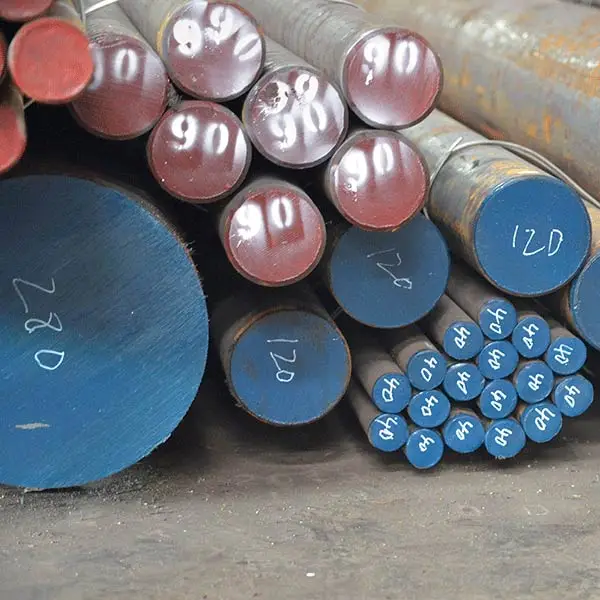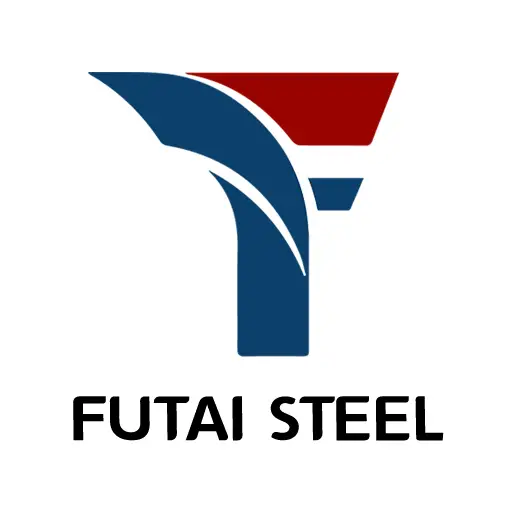What Is Tool Steel? 3 Major Benefits for Your Projects
Table of Contents
Introduction

When it comes to industrial applications, one of the most crucial materials is tool steel. It is known for its superior strength, hardness, and resistance to wear and tear, making it the material of choice for manufacturing tools used in a wide variety of industries. So, what is tool steel and why is it considered so vital for many manufacturing projects?
Tool steel is a high-carbon alloy that is specifically designed for tools and machinery that require excellent performance under extreme conditions. This steel is particularly popular in fields such as automotive, aerospace, metalworking, and manufacturing because it combines durability, hardness, and heat resistance, all crucial qualities for heavy-duty operations. In this blog, we will explain what is tool steel and highlight three major benefits it offers for your projects.
What Is Tool Steel? A Brief Overview


Before we explore the specific benefits of tool steel, it’s important to first understand what tool Before we dive into the benefits, it’s important to understand what is tool steel. Tool steel is a broad category of carbon and alloy steels that are engineered to withstand the extreme conditions encountered by tools, dies, and other industrial components. What is tool steel used for, you may wonder? It is primarily used for making tools that are designed to cut, shape, or form other materials. This includes cutting tools, molds, dies, and other industrial tools that need to maintain their performance despite wear, heat, and stress.
The unique properties of tool steel are achieved by adding alloying elements such as carbon, chromium, molybdenum, and vanadium. These elements help tool steel maintain its hardness, toughness, and resistance to wear and heat, ensuring the tool remains functional even under intense use.
There are various types of tool steel, each suited for specific applications. Common types include water-hardening steel, cold-working steel, hot-working steel, and high-speed steel. Each of these variants is designed to perform in specific conditions, such as high temperatures or under mechanical stress.
3 Major Benefits of Tool Steel for Your Projects
NO 1. Increased Durability and Wear Resistance
One of the key advantages of tool steel is its superior durability, which comes from its high-carbon content and alloying elements. What is tool steel’s role in durability? Tool steel is specifically engineered to endure continuous wear and tear, making it an ideal material for applications that involve heavy friction or impact. Whether you are using tool steel for cutting tools, dies, or molds, its exceptional wear resistance ensures that these tools retain their shape and functionality over extended periods of use.
This wear resistance is particularly beneficial in industries like automotive manufacturing, metalworking, and aerospace, where tool life directly impacts productivity and overall efficiency. Tools made from tool steel can withstand harsh operating conditions, reducing the frequency of repairs and replacements. This leads to cost savings and increased profitability, as tools last longer and continue to perform optimally.
Additionally, by opting for tool steel, manufacturers can ensure the quality of their work remains high, as the material preserves its integrity throughout its lifespan. This allows your manufacturing processes to run more smoothly, reducing downtime and enhancing overall performance.
NO 2. Superior Hardness and Edge Retention
Another major benefit of tool steel is its superior hardness and ability to retain its edge under demanding conditions. What is tool steel’s role in maintaining sharpness? The unique composition of tool steel—featuring alloying elements like carbon, chromium, and molybdenum—gives it the hardness required to maintain sharp edges for extended periods of time. This makes it an excellent choice for tools used in cutting, shaping, and machining materials that need exceptional precision.
The hardness of tool steel ensures that tools such as drills, punches, and saw blades remain sharp and perform efficiently without dulling quickly, even under high stress. This durability in terms of edge retention reduces the need for frequent replacements or sharpening, which helps to minimize downtime and maintenance costs.
For industries that demand high-precision cutting, tool steel’s ability to hold a sharp edge ensures the highest quality finished products. The precision and sharpness are maintained throughout the lifespan of the tool, allowing manufacturers to produce better results with greater consistency and less waste.
NO 3. Heat Resistance for High-Temperature Applications
Heat resistance is another major reason why tool steel is favored for high-performance applications. What is tool steel’s capability in heat resistance? Tool steel can withstand extreme temperatures without losing its hardness, strength, or structural integrity. This makes it an ideal material for tools that are exposed to high heat during operations, such as forging dies, extrusion dies, and hot-press molds.
When exposed to high temperatures, most materials tend to soften and lose their strength. However, tool steel retains its hardness and mechanical properties at elevated temperatures, allowing tools to function properly even in environments where heat can cause premature failure in other materials. This heat resistance is particularly valuable in industries like metalworking, aerospace, and automotive manufacturing, where tools are frequently subjected to thermal stress.
By using tool steel in high-temperature applications, you ensure that tools will not only perform effectively but also last longer, reducing maintenance needs and improving operational efficiency.
Key Considerations When Choosing Tool Steel
When selecting tool steel for your projects, it is essential to consider several factors that will influence its performance. These factors include the specific type of steel required for the task, the temperature and pressure conditions it will face, and the tool’s required lifespan.
Here is a table summarizing some key types of tool steel and their most common uses:
| Type of Tool Steel | Common Applications | Key Features |
|---|---|---|
| Water-hardening | Low-cost tools, less demanding work | Easy to harden, economical |
| Cold-working | Punches, dies, forming tools | High wear resistance, excellent edge retention |
| Hot-working | Forging dies, extrusion dies, molds | Excellent heat resistance |
| High-speed steel | Cutting tools, drill bits, saw blades | Maintains hardness at high temperatures |
By understanding the differences between the types of tool steel and their suitability for specific tasks, you can make an informed decision about the best material for your project.
Conclusion
Tool steel plays a crucial role in the performance and longevity of tools used across various industries. Its durability, hardness, and heat resistance make it the material of choice for demanding applications that require high precision, performance, and longevity. By understanding what tool steel is and the benefits it offers, you can ensure that your projects are completed with high-quality tools that deliver exceptional results.
When selecting tool steel, it’s important to consider the specific needs of your project, the operating conditions, and the type of tools required. With the right choice of tool steel, you can improve the efficiency, cost-effectiveness, and quality of your manufacturing operations.
FAQ
What is tool steel used for?
Tool steel is a specialized type of steel designed specifically for manufacturing tools that need to endure high levels of wear, heat, and stress. It is commonly used for creating a wide range of tools that require superior strength and durability under harsh working conditions. Some of the most common applications include cutting tools, molds, dies, punches, and drills. These are tools that are subjected to continuous friction, pressure, and thermal stress, and tool steel’s unique properties enable these tools to retain their sharpness, form, and functionality even in demanding environments.
Whether used for cutting, shaping, or machining, tool steel’s exceptional wear and heat resistance make it indispensable in industries such as automotive manufacturing, metalworking, and aerospace, where tools need to maintain peak performance for extended periods.
Is tool steel the same as regular steel?
Tool steel is not the same as regular steel. While regular steel is often used in construction and structural applications, tool steel is specifically engineered to meet the demanding needs of industries that require tools capable of withstanding extreme conditions. Tool steel is typically characterized by its high carbon content and the addition of various alloying elements such as chromium, molybdenum, vanadium, and tungsten. These elements give tool steel superior hardness, wear resistance, and heat resistance compared to regular steel, making it the preferred material for tools that are used in high-stress environments. In addition, tool steel can be further customized through heat treatment processes to achieve the desired mechanical properties based on the intended application.
Can tool steel be hardened?
Yes, tool steel can be hardened through heat treatment processes. The process of hardening involves heating the steel to a specific temperature and then cooling it in a controlled manner, which causes the steel to undergo a transformation in its microstructure. This transformation increases the hardness and wear resistance of the tool steel. Different types of tool steel have varying hardening capabilities, depending on their chemical composition and intended use. For example, some tool steels are designed to retain hardness even at high temperatures, while others may be more suited to providing superior wear resistance in cold-working applications. By tailoring the hardening process, manufacturers can create tools that are precisely suited for specific tasks, ensuring optimal performance and durability.
How does tool steel perform under heat?
What is tool steel’s performance under heat? Tool steel is engineered to perform exceptionally well in high-temperature environments. Unlike regular steel, which can lose its strength and hardness when exposed to heat, tool steel is designed to retain its mechanical properties at elevated temperatures. This makes tool steel highly valuable for applications such as forging, die-casting, and hot-working processes, where tools are exposed to extreme temperatures. What is tool steel’s resistance to heat? It enables tools made from it to maintain their shape, strength, and performance in these high-temperature conditions, ensuring better efficiency, productivity, and safety in industries that require high heat resistance, such as aerospace and automotive manufacturing.
What is the most common type of tool steel?
What is the most common type of tool steel? Cold-working tool steel is the most widely used type of tool steel. These steels are known for their outstanding wear resistance, making them perfect for tools like punches, dies, cutting tools, and more. Cold-working tool steel is especially suited for applications where tools are exposed to high stress but do not experience high temperatures. What is tool steel used for in cold-working applications? These steels maintain their sharpness, resist deformation, and endure high levels of stress, making them highly effective in many manufacturing processes. Cold-working tool steels are essential for achieving high precision and extended tool life in industries like metalworking, stamping, and forming.
